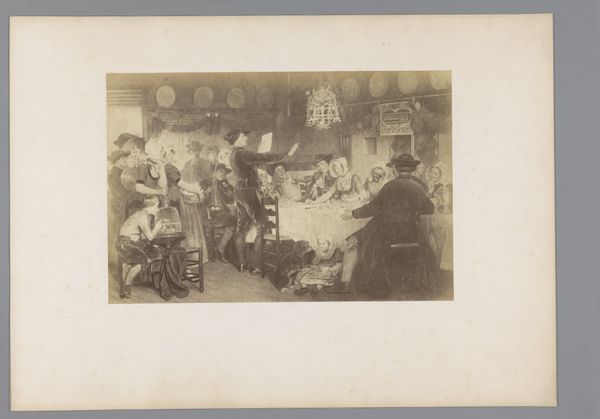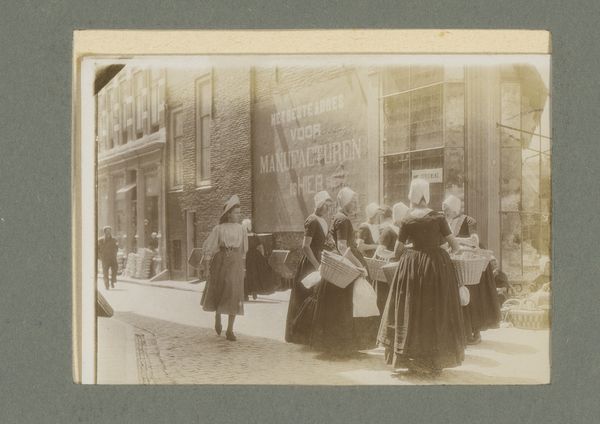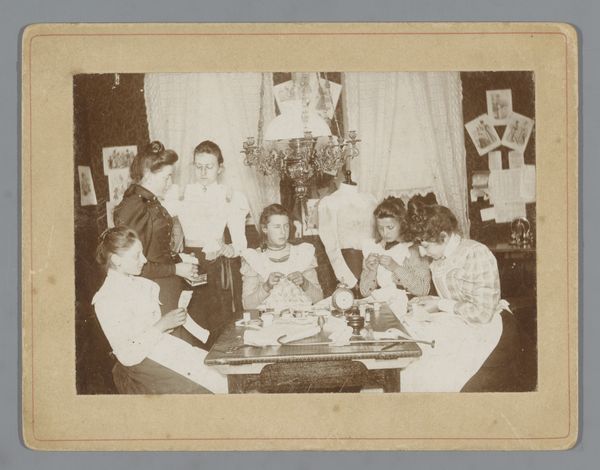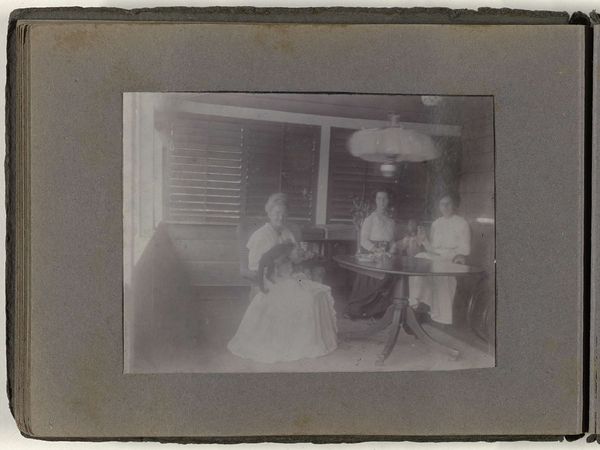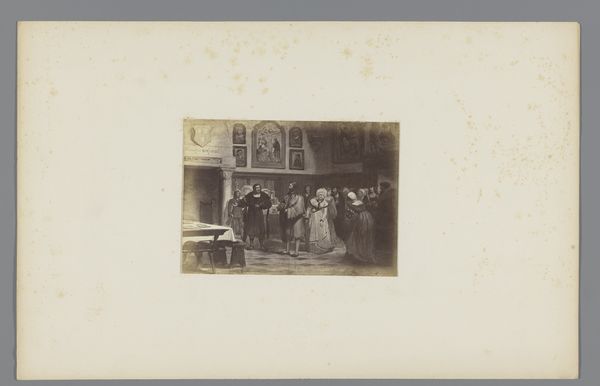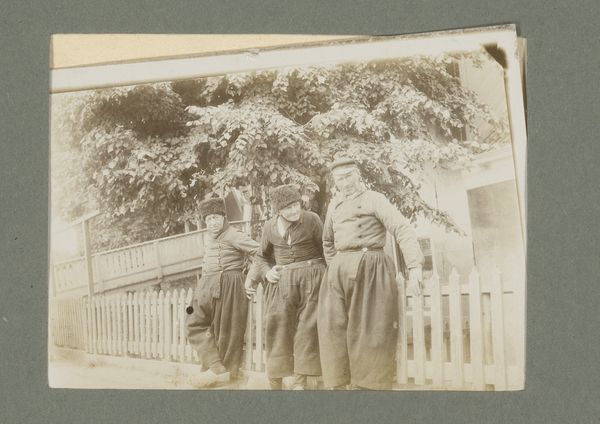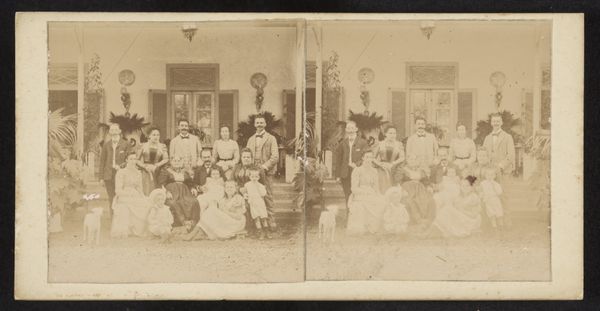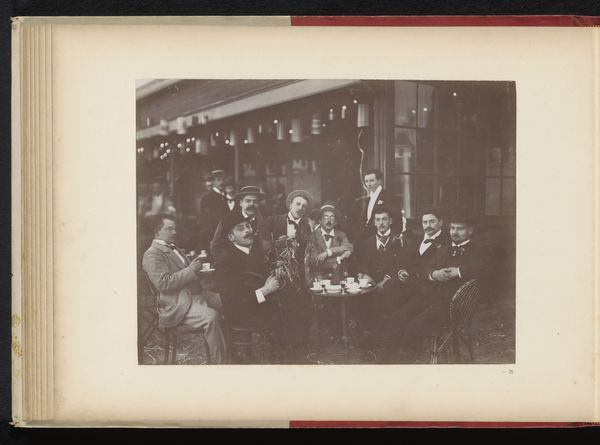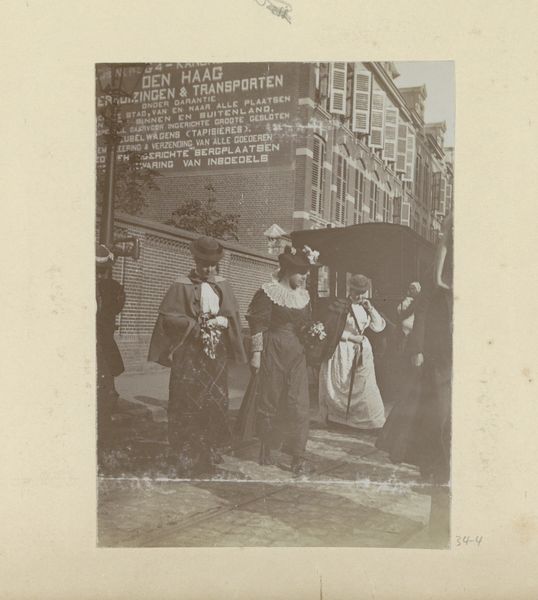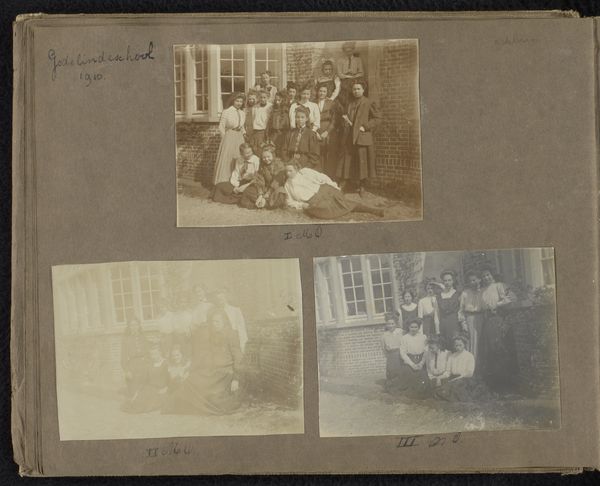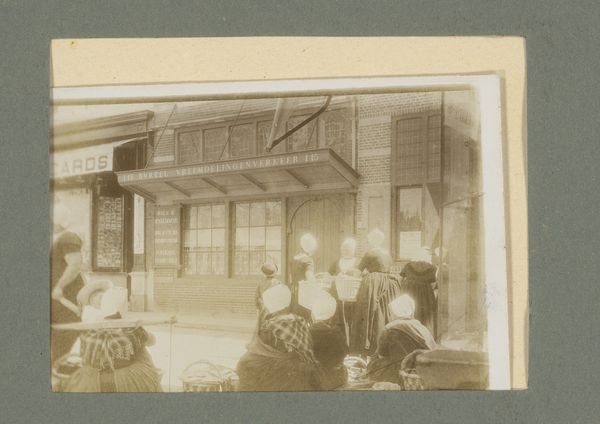
photography
#
pictorialism
#
photography
#
genre-painting
#
street
Dimensions: height 73 mm, width 99 mm
Copyright: Rijks Museum: Open Domain
Editor: So, this photograph is titled "Vrouwen in klederdracht met manden, staand op straat," which translates to "Women in traditional costume with baskets, standing on the street." It’s by G. Hidderley, and was taken sometime between 1920 and 1940. It has a somewhat staged quality, and I'm immediately drawn to their baskets and wonder about the labour involved in gathering what's inside them. What's your take on this image? Curator: Indeed. Let’s focus on those baskets. Woven materials, the act of gathering… how does that relate to the economic and social structures of the time? Are these women selling the contents of their baskets, or providing a service, and what does their clothing indicate about their social standing and participation in local economies? It looks like they might be near a manufactury? Editor: I think so, there's a sign in the background. Is it typical to see pictorialism engaging with those kinds of working-class signifiers? Curator: Pictorialism often sought to elevate photography to the status of art by employing techniques similar to painting and etching, softening focus, and manipulating the printing process. However, focusing on subjects from everyday life also allowed them to subtly document the labor involved in the manufacturing and commercial transactions occurring around them. How might the aesthetic choices made by the photographer affect how labor, class, and gender intersect in this photograph? Editor: So it's like the style is almost at odds with what they're representing, and the material reality of the image becomes even more pronounced? The soft focus and artful composition serve to both reveal and conceal the realities of these women's lives, raising the question of intent. Curator: Precisely! It encourages us to look closely at the social context of the image and the material conditions it represents, and reflect upon how they're valued within aesthetic choices. What have you learned from the image, taking that into account? Editor: That context is really important when you view an artwork. Now I wonder if this work valorizes labor or merely aestheticizes it. Thanks for shedding light on this photograph.
Comments
No comments
Be the first to comment and join the conversation on the ultimate creative platform.
